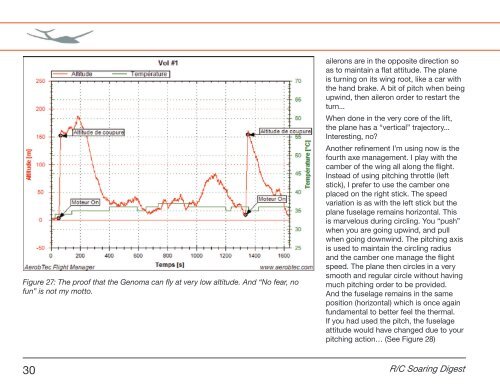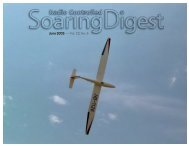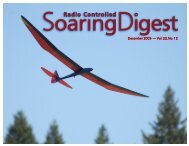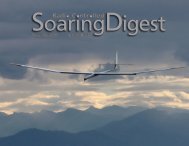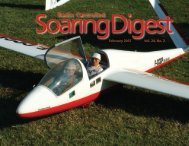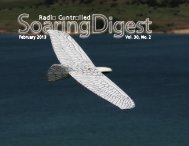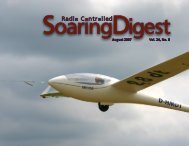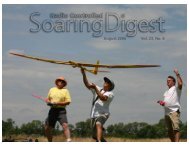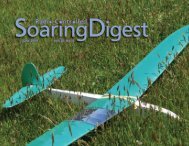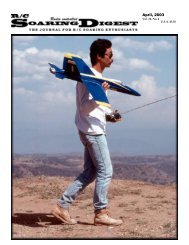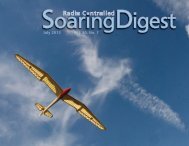Create successful ePaper yourself
Turn your PDF publications into a flip-book with our unique Google optimized e-Paper software.
Figure 27: The proof that the Genoma can fly at very low altitude. And “No fear, no<br />
fun” is not my motto.<br />
ailerons are in the opposite direction so<br />
as to maintain a flat attitude. The plane<br />
is turning on its wing root, like a car with<br />
the hand brake. A bit of pitch when being<br />
upwind, then aileron order to restart the<br />
turn...<br />
When done in the very core of the lift,<br />
the plane has a “vertical” trajectory...<br />
Interesting, no?<br />
Another refinement I’m using now is the<br />
fourth axe management. I play with the<br />
camber of the wing all along the flight.<br />
Instead of using pitching throttle (left<br />
stick), I prefer to use the camber one<br />
placed on the right stick. The speed<br />
variation is as with the left stick but the<br />
plane fuselage remains horizontal. This<br />
is marvelous during circling. You “push”<br />
when you are going upwind, and pull<br />
when going downwind. The pitching axis<br />
is used to maintain the circling radius<br />
and the camber one manage the flight<br />
speed. The plane then circles in a very<br />
smooth and regular circle without having<br />
much pitching order to be provided.<br />
And the fuselage remains in the same<br />
position (horizontal) which is once again<br />
fundamental to better feel the thermal.<br />
If you had used the pitch, the fuselage<br />
attitude would have changed due to your<br />
pitching action… (See Figure 28)<br />
30 R/C <strong>Soaring</strong> <strong>Digest</strong>


